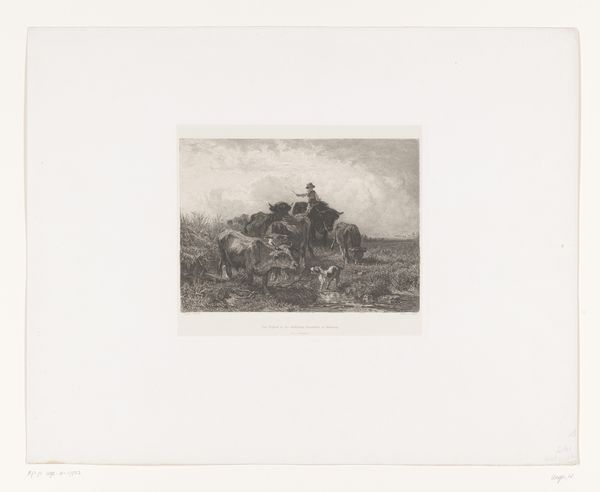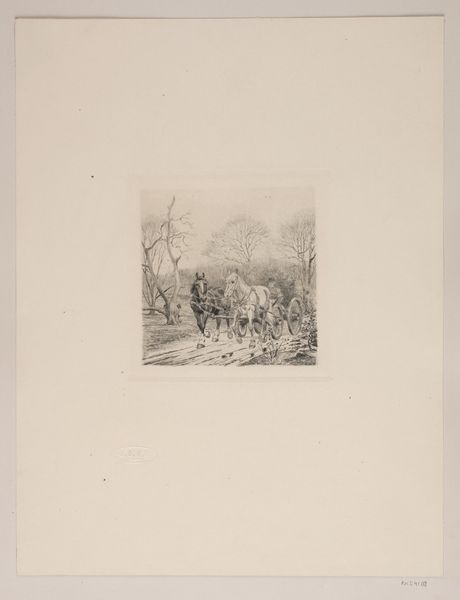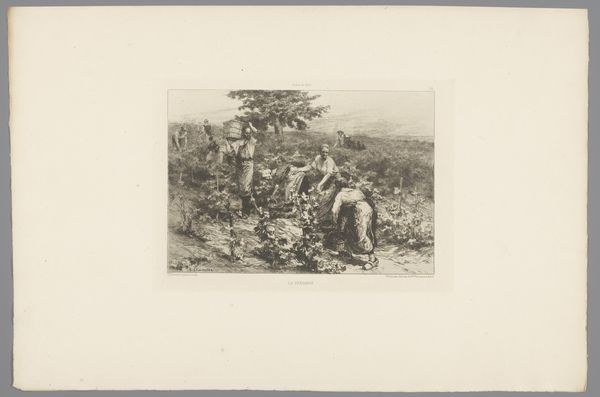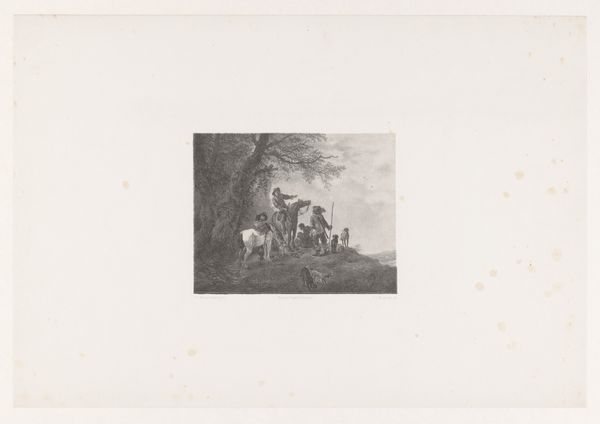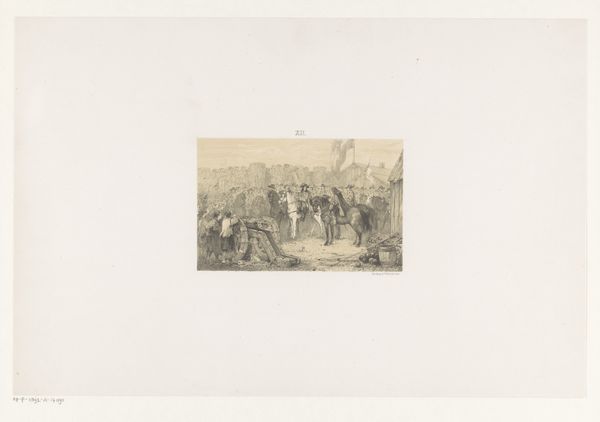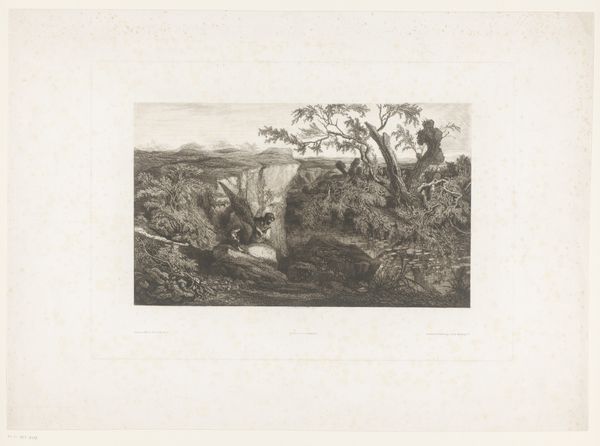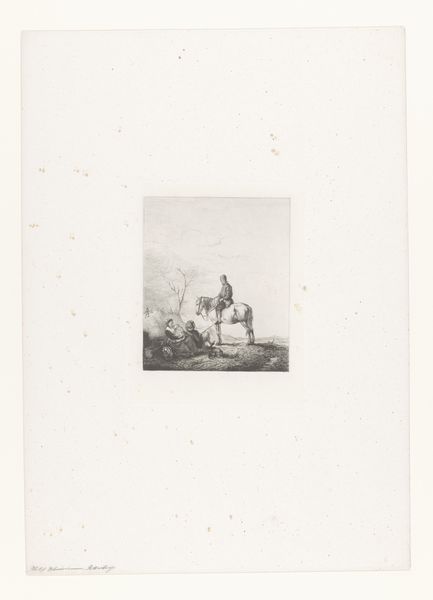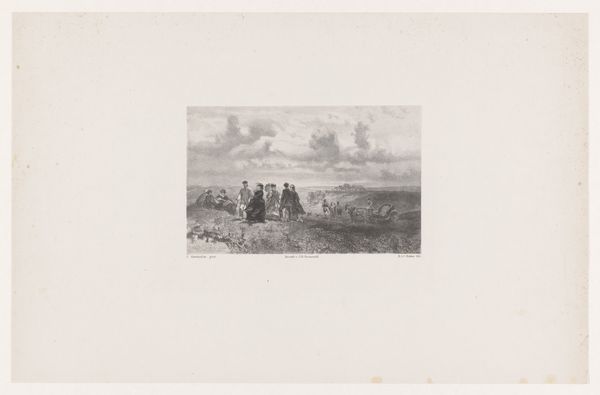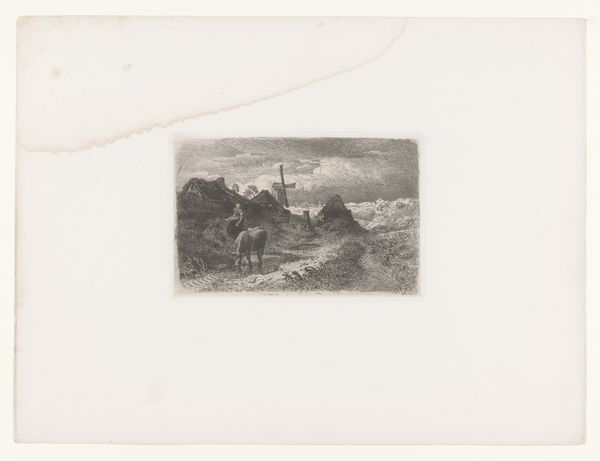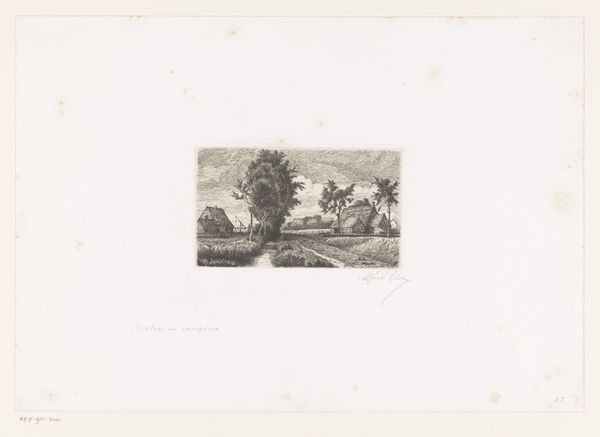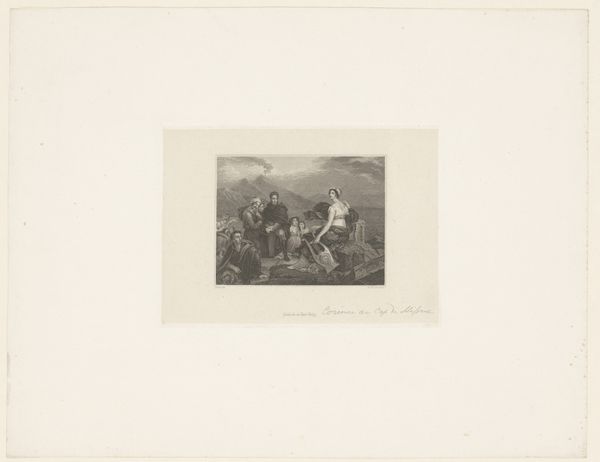
print, engraving
# print
#
landscape
#
genre-painting
#
engraving
#
realism
Dimensions: height 205 mm, width 273 mm
Copyright: Rijks Museum: Open Domain
Editor: This is "Herders met een kudde en in de verte een wolf" by William Unger, dating between 1847 and 1889. It’s a print, an engraving, currently held at the Rijksmuseum. It looks so peaceful at first glance, almost idyllic. What do you see in this piece beyond the surface? Curator: The immediate pull comes from that almost imperceptible wolf in the distance. Notice how Unger subtly plants the seed of unease within this otherwise serene pastoral scene. The wolf, a primal symbol of threat, awakens something ancestral within us, a reminder of vulnerability, even in what appears safe. Editor: So, the presence of the wolf charges the entire image? Curator: Precisely! It transforms the image. The sheep, usually symbols of innocence and passivity, suddenly embody fragility, dependence. And what about the herders themselves? Do they appear capable? Are they vigilant enough? Editor: I guess there's a bit of doubt planted there now. They almost seem unaware, just part of the landscape. Curator: Yes, the artist isn't just depicting a scene but an idea about nature versus culture, safety versus danger. It suggests that the line separating civilization from the wild, order from chaos, is razor-thin and requires constant vigilance. And that wolf... it represents everything outside that circle of light. Editor: It’s incredible how one tiny element can completely reshape how you perceive an entire work. I wouldn't have noticed the symbolic weight of that wolf on my own. Curator: These images, even landscapes, become vessels for anxieties and aspirations. The beauty is seeing how artists subtly weave them in. What new connections can you draw between what is on display and life experiences?
Comments
No comments
Be the first to comment and join the conversation on the ultimate creative platform.
